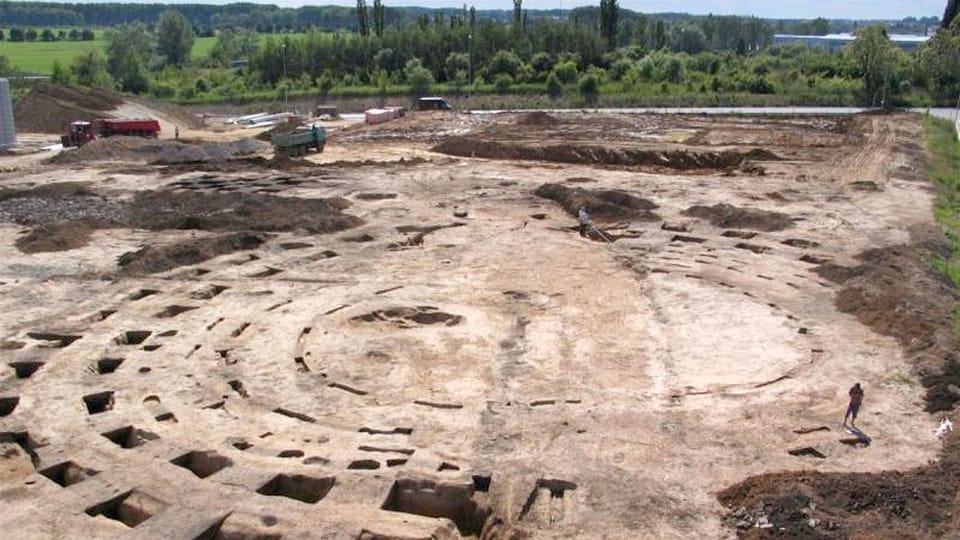7,000-year-old Structure Near Prague is Older than Stonehenge, Egyptian Pyramids
This circular structure may have served a small farming population around 7,000 years ago during the late Neolithic, or New Stone Age, although its actual use is uncertain.
Near Prague, archaeologists have found the remnants of a Stone Age building called a roundel1 that predates both Stonehenge and even the Egyptian pyramids. Large circular Neolithic buildings known as roundels were built between 4600 and 4900 BC. Prior to a few decades ago, when aerial and drone photography became an important element of the archaeological toolkit, roundels were not well-known ancient features.

Roundels, as seen from above, are made up of one or more wide, circular ditches with a number of holes that served as entrances. Each roundel's interior was probably lined with wooden poles, with possible mud sealing the gaps. All around central Europe, hundreds of these circular earthworks have been discovered, but they all date to the last two or three centuries.
The sizes of these roundels, which are typically approximately 200 feet (60 m) in diameter, or half the length of a football field, are rather astounding considering that the people who built them had only stone tools at their disposal. However, nothing is known about the individuals because there aren't many tombs that could shed light on their lives seven millennia ago.
Roundels likely served a number of purposes, the most significant of which was probably socio-ritual. It is possible that roundels were constructed for large-scale assemblies, maybe to memorialize occasions that were significant to the community as a whole, such as rites of passage, astronomical phenomena, or commercial transactions. Although their prominence in the late Neolithic is evident, it is unclear what they served for.

